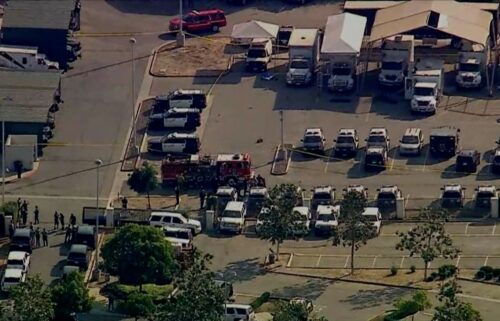5 key questions (and answers) about the Delta flight that doused children with jet fuel in LA

A Delta plane that doused children at six Los Angeles schools with jet fuel this week left many puzzled on how such a maneuver happened in a populated area.
As federal officials investigate the incident that injured 60 people, here are the answers to key questions:
What happened?
The Delta Air Lines flight was headed from Los Angeles to Shanghai on Tuesday when it experienced an engine problem shortly after takeoff. On its return to Los Angeles International Airport, it dumped its fuel, hitting several schools in its path.
Did the pilot notify air traffic control?
No.
Air crews will typically notify air traffic control of an emergency and indicate they need to dump fuel, the Federal Aviation Administration said. Air traffic controllers direct the plane to the appropriate fuel-dumping area. But in this case, the pilots did not ask for approval before the fuel release, according to federal officials.
“A review of yesterday’s air traffic control communications shows the Delta Flight 89 crew did not tell air traffic control that they needed to dump fuel,” the FAA said in a statement Wednesday.
Delta declined to comment, citing an ongoing investigation.
“The aircraft landed safely after a release of fuel, which was required as part of normal procedure to reach a safe landing weight,” the airline said.
What was wrong with the plane’s engine?
In audio of the conversation between a Delta pilot and an air traffic controller posted online, the pilot said the flight was returning to Los Angeles International Airport because one engine had compressor stalls. Compressor stalls affect the airflow.
The pilot described it as “not critical.”
“OK, so you don’t need to hold or dump fuel or anything like that?” the tower asked. The pilot said, “Uh, negative.”
After hearing the transmissions between the tower and the pilot, CNN aviation safety analyst David Soucie said there may have been a communication failure.
The air traffic controller should have asked the question about holding or dumping fuel without using the word “don’t,” and he should have repeated the questions, Soucie said.
The pilot said the engine was under control so he could have taken the plane over the Pacific Ocean to dump fuel or burn it off, said Soucie, a former FAA safety inspector.
Why do planes need to dump fuel?
There are maximum takeoff and landing weights for aircraft.
For a plane with full fuel tanks to land, it must dump the fuel to avoid potentially crashing upon landing, Soucie said. In this case, federal officials said the fuel dumping procedure did not occur at the optimal altitude that would have allowed the fuel to atomize properly.
While details on the Delta incident are unclear, Soucie said one theory is pilots may have forgotten to dump the fuel until the final approach while doing a pre-landing checklist and discovered the weight of the plane was too heavy. And rather than go around the airport again to drop elsewhere, they might have decided to dump it over land.
If a pilot decides to dump fuel, the air traffic controller has to assign the flight an altitude of at least 2,000 feet above the highest obstacle, according to federal officials.
“If you are in contact with an aircraft when it starts dumping fuel, inform other controllers and facilities which might be concerned. Facilities concerned shall broadcast an advisory on appropriate radio frequencies at 3-minute intervals until the dumping stops,” the FAA says.
How does the fuel dump process work?
There are special procedures on fuel dumps for aircraft operating in major US airports.
“These procedures call for fuel to be dumped over designated unpopulated areas, typically at higher altitudes so the fuel atomizes and disperses before it reaches the ground,” according to the FAA.
Had the plane been at 8,000 feet when the dump occurred, the fuel would never have hit the schools because it would be atomized after leaving the wings, Soucie said.
It is “very rare (fuel is dumped) at a lower altitude where it reaches the ground,” he said.
Those doused by the jet fuel were decontaminated with soap and water, and given gowns to wear. They did not need to be hospitalized.
All the jet fuel has since evaporated, and affected schools returned to normal schedules Wednesday.




